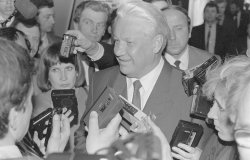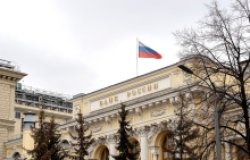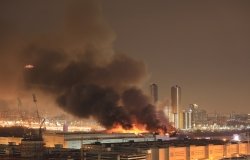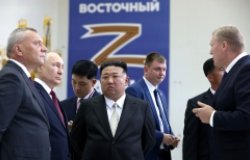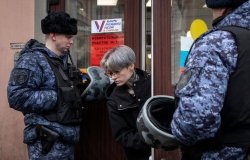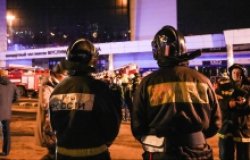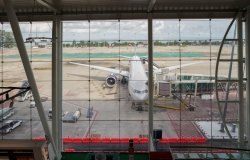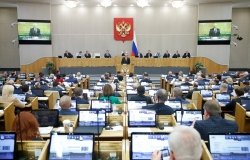
A blog of the Kennan Institute
Putin Will Leave Russia in Ruins
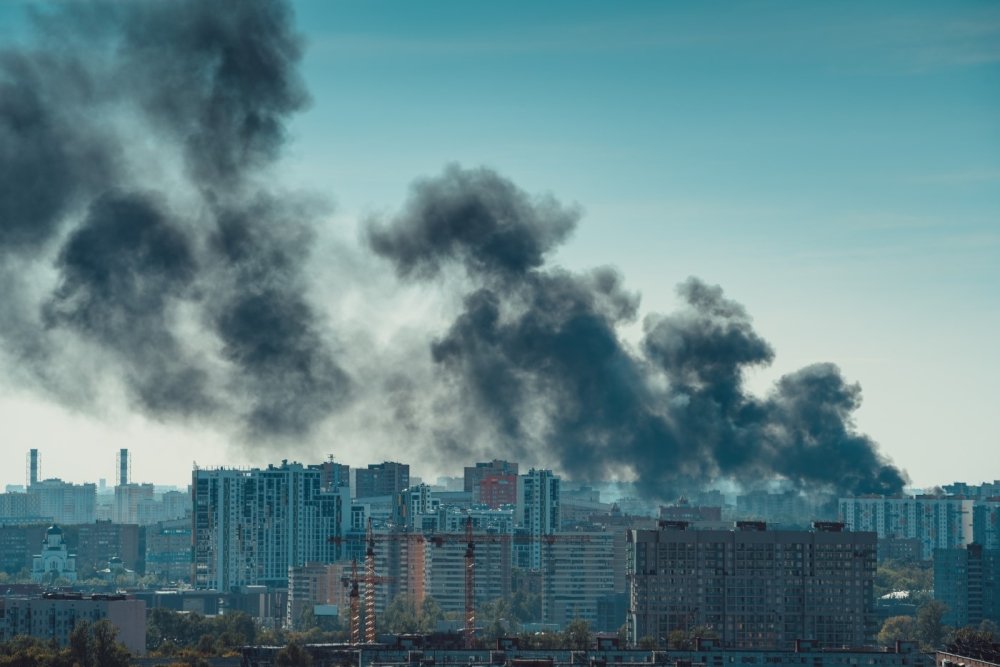
From the moment Russia launched its invasion of Ukraine two years ago, it was clear that regardless of the military outcome, President Vladimir Putin would lose Ukraine for Russia in civilizational terms.
Now, as the war enters its third year, the military outlook looks grave for Ukraine. Its counteroffensive stalled over the summer, exacerbated by delays in crucial military assistance from the US Congress. Putin seems closer than ever to ending the war on Russian terms. Yet regardless of the outcome of the war, Putin has led Russia to a crushing defeat. He lost Ukraine for his vaunted “Russian World” as anything other than an occupied hostile territory. Putin has ravaged Russia’s prospects across various fronts, casting a shadow over its future for decades to come.
Last Gasp of Empire
Putin famously claimed that the dissolution of the Soviet Union was the greatest geopolitical catastrophe of the twentieth century, and blamed former Soviet president Mikhail Gorbachev for failing to hold the old empire together. Today, Putin is in effect finishing what Gorbachev started—only through war and bloodshed rather than peaceful separation.
Russia’s top foreign policy since independence has focused on promoting Russian power, influence, and the Russian language within the former Soviet space. Putin launched his invasion against Ukraine in 2014 and 2022 and against Georgia in 2008 in part “to protect Russian-speaking populations.” These wars have alarmed the other former Soviet republics, now over three decades post-independence. Each of them, especially those sharing a border with Russia, must now consider its own Russian speaking population as a security threat to its sovereignty.
His war has also weakened Russia’s capacity to project power to the extent that it was unwilling or unable to assist its treaty ally Armenia when Azerbaijan forcibly reclaimed the Nagorno-Karabakh territory last year. Partly in response, Armenia signed on to the International Criminal Court, which has a warrant out against Putin for illegally deporting Ukrainian children to Russia. While it was only natural for the independent states to drift away from Moscow’s orbit over time, Putin has vastly accelerated that process.
Russia’s New Economic Imbalances
Back home, Putin’s over two decades of power in the Kremlin is in large part founded on the legitimacy he built in leading Russia out of the economic turmoil of the 1990s into a period of sustained growth and stability.
That record is now in ashes, as Russia faces its greatest economic dislocation since the transition from socialism to a market economy. Thousands of Western corporations have fled Russia in the wake of Putin’s invasion, with their assets either sold in a fire sale or nationalized outright. Russia’s economy is now less modern, with new car production lacking antilock brakes or airbags and its Western-built planes threatening to fail absent new parts. Russian countersanctions on such imports as food have driven up costs for Russian consumers, while Russia’s national bank struggles to mitigate the elevated interest rates and plummeting exchange rates resulting from Russian wartime fiscal policies.
For example, American commentator Tucker Carlson recently visited a Moscow grocery store during his trip to interview Putin. He and his team filled a cart and estimated they would need to pay about $400, whereas the actual cost was $104. Such a bargain! Yet with the exchange rate near 91 rubles to the dollar, Tucker’s shopping spree cost about 36,500 rubles. The one week’s worth of food in his cart far exceeded Moscow’s monthly minimum wage of 29,389 rubles—which is far higher than anywhere else in Russia.
Tucker might point out in rebuttal that the Russian economy outpaced both that of the United States and that of Europe in 2023, growing at a 3.6 percent rate despite the country being subject to a wide array of economic sanctions and cut off from major global markets. Of course, what that statistic misses is that much of that growth went into the production of matériel that Russia will use to destroy civilian targets in Ukraine, or that Ukraine will destroy on the battlefield if American military assistance resumes. Some Russians on the production lines may benefit, but all Russians are now suffering the effects of interest and exchange rates moving in the wrong direction.
For decades, a key part of Putin’s constant litany of complaints against the West is that Western capitals want to weaken Russia and turn it into a resource colony for more economically advanced nations. Putin is turning that conspiracy theory into a reality, only with a different colonial power benefiting. Russia’s invasion of Ukraine was met with coordinated but targeted trade sanctions from the G7 and other allied nations. Combined with Russian countersanctions, trade between Russia and most of the West plummeted.
Russia depends on revenues from its energy exports, primarily oil, to nonsanctioning nations such as India and China to sustain its war effort. Only Russia is finding itself forced to accept payment in nonconvertible currencies, India’s rupee and China’s yuan. While Russia’s trade with China has truly boomed, surpassing $240 billion for the first time in 2023, growth in Russian imports from China far outpaces that of China’s imports from Russia. One curious indicator of this imbalance is the glut of empty cargo containers from China piling up inside Russia. A more telling indicator of the broader power imbalance, according to Kennan Institute director William Pomeranz, came during the China-U.S. summit in San Francisco: “Xi proclaimed that the world was big enough for two powers. He made no mention of a third.”
Russia’s Military Struggles
Perhaps the costs to Russia in terms of regional influence, erosion of soft power, and economic hardship would be worth it so long as Russia’s military power proved strong enough to achieve its political objectives. Another disaster. Russian military losses have been immense: American intelligence estimates that Russia has lost 87 percent of active duty troops it had prior to its invasion (over 300,000 killed or injured) and up to two-thirds of its tanks. Russia’s naval embargo of Ukraine, intended to interrupt grain exports, has been broken—by a nation without a navy and accomplished mainly through long-range rockets and self-produced naval drones.
Today, Russia’s prosecution of the war now depends on artillery shells purchased from North Korea and drones procured from Iran. Russia concentrates its military strikes on civilian buildings and infrastructure far from the front. But it is making slow advances on the battlefield as the Ukrainian army runs low on ammunition. As for the future, the Russian military will need decades to replenish its equipment and manpower. Its military exports will one day face an international market where its best products have proven to be utterly inadequate against American Javelins, HIMARS, and Patriot Missile batteries. And its generals and officials will spend the rest of their lives sheltering from international war crime indictments.
The day after the war ends, Russia’s troubles truly begin—and will last for decades. The soft power and influence of a once great nation will lie in tatters. Its economy will not quickly integrate with the rest of the world. Instead, it will confront demands for reparations and a lack of trust or sympathy from the world’s democratic market nations. Russia may be a hero and partner to other aspiring aggressive autocrats. But its real future may be that of a client state and gas station to China. Putin may despise Gorbachev for the breakup of the Soviet Union. His successors, however, will revile Putin for reducing Russia to a ruin.
The opinions expressed in this article are those solely of the author and do not reflect the views of the Kennan Institute
See our newest content first.
Subscribe to receive the latest analysis from the Russia File
About the Author


Kennan Institute
The Kennan Institute is the premier US center for advanced research on Russia and Eurasia and the oldest and largest regional program at the Woodrow Wilson International Center for Scholars. The Kennan Institute is committed to improving American understanding of Russia, Ukraine, Central Asia, the Caucasus, and the surrounding region though research and exchange. Read more
